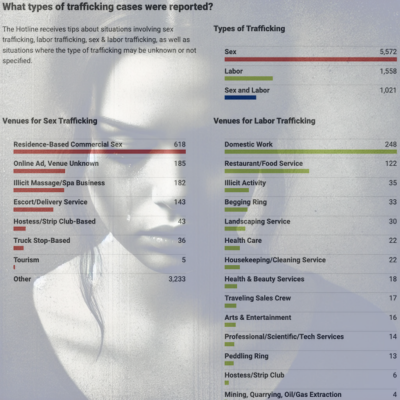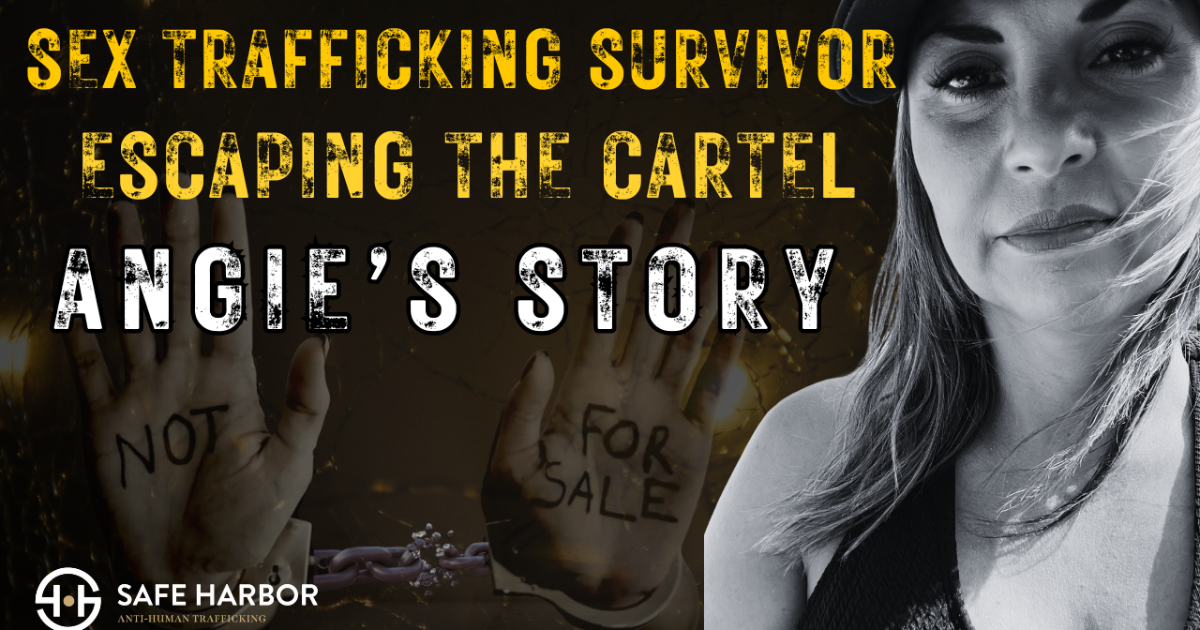Wise Media Studios, based in Hayden, ID, recently had the privilege of interviewing Angie Sedore, the founder of the nonprofit organization Safe Harbor Anti-Human Trafficking. Located in Coeur d’Alene, ID, Safe Harbor is a beacon of hope for survivors of human trafficking, providing critical support and resources. Angie’s story is one of unimaginable hardship, resilience, and transformation. This blog delves into her journey, the inception of Safe Harbor, the challenges of combating trafficking in the age of artificial intelligence, and how communities can work together to end this global crisis.
Watch the Full Interview:
Click here to watch Angie Sedore’s inspiring interview with Wise Media Studios.
From Darkness to Light: Angie’s Trafficking Story
Angie Sedore’s story begins in Albuquerque, New Mexico, where she endured the trauma of being trafficked by a man she initially trusted. This man, later revealed as a regional head of the Mexican cartel, used manipulation and psychological grooming to force Angie into a life of exploitation.
“He told me, ‘You give it away for free; why not make money from it?’” Angie recalled during the interview.
Over several years, Angie was coerced into encounters with high-profile clients, including celebrities. Despite the outward appearance of a “glamorous” lifestyle, Angie realized she was completely at the mercy of her trafficker. Her sense of control and autonomy were illusions. This awakening spurred her to seek escape, setting her on a path toward recovery and advocacy.

The Hidden Nature of Trafficking
Human trafficking, particularly sex trafficking, often operates in plain sight. Victims like Angie are frequently groomed in ways that make their exploitation seem voluntary to outsiders. The United Nations Office on Drugs and Crime (UNODC) reports that women and children comprise 71% of all trafficking victims globally, often targeted due to systemic inequality and economic vulnerability.
Understanding the Scale of Human Trafficking
Human trafficking is not just a local problem—it’s a global epidemic generating an estimated $150 billion annually. While physical trafficking remains prevalent, online trafficking has skyrocketed in recent years, thanks to the rise of digital platforms and artificial intelligence.
The Role of AI in Trafficking: A Double-Edged Sword
AI-Generated Exploitation Content
AI technologies, such as image generators and chatbots, are being misused to create synthetic child exploitation content. These AI-generated images and videos are often indistinguishable from real photos, overwhelming existing detection systems and diverting resources away from real victims.
Tech Companies and Their Role
While tech companies are required to report known CSAM (Child Sexual Abuse Material) to authorities, there is currently no legal obligation for them to proactively search for it. AI could help identify and differentiate synthetic content from real abuse material, but this requires substantial investment and regulatory clarity.
Grooming: A Deeply Manipulative Process
Angie’s trafficker employed a deliberate grooming process to create dependency and obedience. Initially presenting himself as a protector, he gradually reshaped her thoughts and beliefs until she felt powerless to resist.
“I didn’t even know I could say no,” Angie revealed, highlighting the psychological control traffickers exert over their victims.
Stages of Grooming:
- Targeting a Vulnerability: Traffickers prey on emotional or financial weaknesses.
- Building Trust: Through gifts, compliments, and attention, traffickers create an emotional bond.
- Isolation: Victims are cut off from friends, family, and other support systems.
- Exploitation: Once dependency is established, victims are coerced into exploitation.
Community-Based Solutions: Safe Harbor’s Model
Safe Harbor Anti-Human Trafficking combats these issues through survivor-led outreach and trauma-informed care. The nonprofit works closely with local businesses, schools, and law enforcement agencies to create a safety net for potential victims and survivors.

Key Initiatives Include:
- Survivor-Led Outreach: Angie and her team share their stories to educate communities and inspire action.
- Emergency Hotlines: Safe Harbor maintains a 24/7 hotline to assist victims in crisis.
- Therapeutic Programs: Services like art therapy, yoga, and counseling help survivors heal and rebuild.
- Digital Safety Education: Workshops teach families and caregivers how to identify and prevent online grooming.
How You Can Help Combat Human Trafficking
- Educate Yourself: Learn the signs of trafficking, such as unexplained injuries or changes in behavior.
- Support Nonprofits: Donate to organizations like Safe Harbor that provide critical resources to survivors.
- Report Suspicious Activity: Contact the National Human Trafficking Hotline at 1-888-373-7888.
- Raise Awareness: Share survivor stories and advocacy materials with your community.
- Advocate for Policy Change: Support laws that strengthen protections for victims and hold traffickers accountable.
A Future Without Trafficking
Angie Sedore’s journey reminds us of the resilience of the human spirit and the importance of standing together to combat injustice. By combining technology, community action, and survivor-led advocacy, we can create a future where everyone is free.
Be part of the solution:
Watch Angie’s interview below to hear her full story of resilience and hope.



